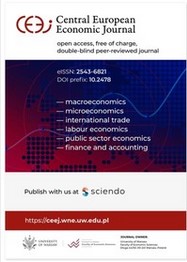Post-socialist Myanmar and the East Asian Development Model
Post-socialist Myanmar and the East Asian Development Model
Author(s): Andrzej BolestaSubject(s): National Economy, Economic history, Economic policy, Political economy, Post-War period (1950 - 1989), Transformation Period (1990 - 2010), Present Times (2010 - today)
Published by: Wydawnictwa Uniwersytetu Warszawskiego
Keywords: development; transformation; economic reforms; Asia; Myanmar;
Summary/Abstract: Myanmar has been undergoing a process of post socialist systemic transformation. During the reform period, its authorities used policy and institutional solutions of the East Asian development model in its post-socialist version, creating foundations for the post-socialist developmental state (PSDS). The concept of the PSDS combines features of a developmental state (DS) and systemic transformation from central planning to market. A developmental state (DS) is considered to be an ideological and conceptual basis for the state’s economic policy and institutional and systemic arrangements that resulted in spectacular developmental achievements of some of the East Asian economies in the second half of the 20th century. Post-socialist transformation is considered the most multi-layered and complicated process of systemic reformulation, which took place at the end of the 20th and the beginning of 21st centuries. The article describes the process of building a PSDS in Myanmar. In economic policy, the authorities have focused on the industrialisation through the development of an export production base. Nevertheless, access to the internal market has often been restricted for foreign entities. Planning through a state planning agency remains a key tool in the formulation of a development strategy. In addition, systemic reforms have been gradual rather than radical (a shock therapy).
Journal: Central European Economic Journal
- Issue Year: 5/2018
- Issue No: 52
- Page Range: 172-185
- Page Count: 14
- Language: English

